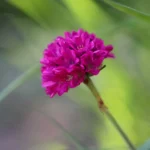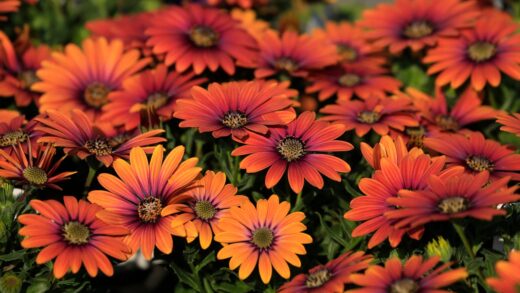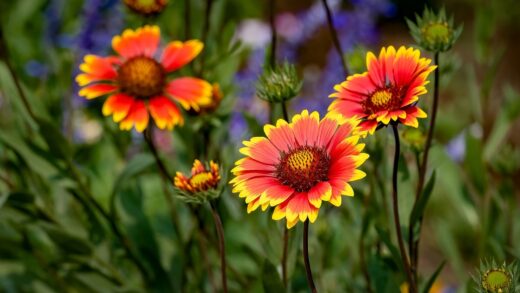Marigolds are cherished in gardens worldwide for their vibrant colours, hardy nature, and ease of cultivation, making them a favourite for both novice and experienced gardeners. These cheerful annuals brighten up any space, from flower beds and borders to containers and vegetable patches, demanding very little in return for their prolific blooming. Proper care, however, unlocks their full potential, ensuring a season-long display of radiant flowers and healthy, robust foliage. Understanding the fundamental needs of these plants—spanning from sunlight and water to soil and pest management—is the key to cultivating a truly spectacular marigold display that becomes the envy of the neighbourhood. Their resilience is legendary, but a mindful approach to their cultivation transforms them from simply surviving to truly thriving.
These sun-loving plants originate from the Americas and have adapted to a wide range of climates, which contributes to their global popularity and straightforward care regimen. The simplicity of their requirements should not be mistaken for a lack of sophistication; rather, it is a testament to their evolutionary hardiness. Providing the right foundational care allows the plant to focus its energy on producing the brilliant, often aromatic, flowers they are famous for. This includes selecting an appropriate planting site, preparing the soil to meet their needs, and establishing a consistent routine for watering and feeding. A well-cared-for marigold is not just a beautiful addition to the garden but also a functional one, often used to deter pests from more sensitive plants.
Success with marigolds begins long before the first flower bud appears; it starts with thoughtful planning and preparation. The selection of the right variety for your specific garden conditions and aesthetic goals is a crucial first step. Whether you choose the towering African marigolds, the compact French marigolds, or the delicate Signet varieties, each has its unique charm and slight variations in care needs. Once the variety is chosen, attention must turn to the garden bed or container itself. Creating an environment that mimics their preferred natural habitat is paramount to encouraging vigorous growth and preventing common problems before they can take hold.
Throughout the growing season, consistent attention to the plant’s condition will pay dividends. This involves more than just the basics of watering; it includes observing the foliage for signs of stress, monitoring for the presence of pests, and providing support for taller varieties as they grow. Regular maintenance tasks, such as deadheading spent blooms, are not merely cosmetic but actively encourage the plant to produce more flowers, extending the blooming period well into the autumn. This ongoing interaction with your plants not only ensures their health but also deepens your connection to the garden, making the process of cultivation a rewarding experience in itself.
General maintenance throughout the season
Maintaining the vigour of marigolds throughout their long blooming season requires a consistent and observant approach. One of the most critical routine tasks is deadheading, which is the practice of removing spent or faded flowers. This simple action prevents the plant from expending energy on seed production and instead redirects that energy into creating new buds and blooms. Regularly pinching off the old flower heads, including the small swelling at their base where seeds would form, keeps the plants looking tidy and significantly prolongs their flowering period, ensuring a continuous splash of colour from late spring until the first frost of autumn.
More articles on this topic
Beyond deadheading, it is important to keep the area around your marigolds free of weeds. Weeds compete with your plants for essential resources such as water, nutrients, and sunlight, which can lead to stunted growth and reduced flowering. Hand-pulling weeds is often the most effective and safest method, especially in densely planted beds, as it avoids disturbing the marigolds’ shallow root systems. Applying a layer of organic mulch, such as wood chips or straw, around the base of the plants can also be highly beneficial, as it helps to suppress weed growth while also conserving soil moisture and regulating soil temperature.
As the season progresses, particularly with taller African marigold varieties, providing some form of support may become necessary. These varieties can grow several feet tall and their large, heavy blooms can cause the stems to bend or even break, especially during periods of strong wind or heavy rain. Placing stakes near the main stem early in the season and loosely tying the stem to the stake with soft garden twine can provide the necessary support without damaging the plant. For a more natural look, you can use bamboo stakes or branching twigs that blend into the foliage.
Finally, regular observation of your plants is a key component of general maintenance. Take the time to inspect the leaves, stems, and flowers for any signs of distress, such as discolouration, wilting, or the presence of insects. Catching problems early makes them much easier to manage and can prevent a minor issue from escalating into a major infestation or disease outbreak. This proactive approach to care ensures that your marigolds remain healthy, vibrant, and productive throughout the entire growing season, providing maximum enjoyment and beauty in your garden.
Soil and location requirements
The foundation for healthy marigolds is the soil in which they are planted. These adaptable plants are not overly demanding, but they perform best in soil that is moderately fertile and, most importantly, well-draining. Waterlogged soil is one of the few things that can quickly lead to the demise of a marigold, as it promotes root rot, a fungal disease that suffocates the roots and prevents them from absorbing nutrients and water. To ensure proper drainage, you can amend heavy clay soils with organic matter like compost, leaf mould, or well-rotted manure, which improves the soil structure and allows excess water to escape more freely.
More articles on this topic
When selecting a location, the amount of sunlight the plants will receive is the most critical factor to consider. Marigolds are true sun-worshippers and require a minimum of six hours of direct, unfiltered sunlight each day to thrive and produce an abundance of flowers. While they can tolerate some partial shade, particularly in very hot climates where the afternoon sun can be intense, insufficient light will result in leggy, spindly plants with sparse foliage and significantly fewer blooms. An open, sunny spot in the garden is therefore the ideal home for these vibrant flowers.
The pH level of the soil is another aspect to consider for optimal growth, although marigolds are quite tolerant of a range of conditions. They generally prefer a soil pH that is slightly acidic to neutral, typically between 6.0 and 7.0. Most average garden soils fall within this range, so it is often not necessary to make specific adjustments. However, if you know your soil is extremely acidic or alkaline, conducting a simple soil test and amending it accordingly can help your marigolds reach their full potential. For example, lime can be added to raise the pH of acidic soil, while sulfur can be used to lower the pH of alkaline soil.
Finally, consider the spacing of your plants when choosing a location. Good air circulation is essential for preventing fungal diseases like powdery mildew, which can thrive in damp, stagnant conditions. The appropriate spacing will depend on the specific variety of marigold you are growing; smaller French marigolds can be planted closer together, while larger African varieties will need more room to spread out. Following the spacing recommendations on the seed packet or plant tag will ensure that each plant has enough space to grow without being overcrowded, leading to healthier plants and a more impressive floral display.
Watering and feeding essentials
Proper watering is crucial for establishing and maintaining healthy marigold plants. When the plants are young and their root systems are still developing, they require consistent moisture to get a strong start. It is best to water them thoroughly at the base, allowing the soil to become moist but not saturated. As the plants mature, they become surprisingly drought-tolerant, but they will still perform best with regular watering, especially during prolonged dry spells or heatwaves. The key is to allow the top inch or two of soil to dry out completely between waterings, which prevents the roots from sitting in soggy conditions that can lead to rot.
The method of watering is just as important as the frequency. Applying water directly to the soil at the base of the plant is far superior to overhead watering. Using a soaker hose, drip irrigation, or a watering can with a long spout helps to keep the foliage and flowers dry. Wet leaves and blooms, especially in humid weather or when watered late in the day, can create an ideal environment for fungal diseases such as powdery mildew and botrytis blight to develop. Watering in the morning is also preferable, as it gives the plants the moisture they need to face the heat of the day and allows any accidental splashes on the foliage to evaporate quickly in the sun.
When it comes to feeding, marigolds are relatively low-maintenance and do not require heavy fertilization. In fact, providing them with too much nitrogen-rich fertilizer can be counterproductive. Excess nitrogen will stimulate lush, green foliage growth at the expense of flower production, resulting in large, leafy plants with very few blooms. If you have prepared your garden bed with plenty of compost or other organic matter before planting, you may not need to fertilize your marigolds at all throughout the growing season.
If your soil is poor or your plants seem to be lacking vigour, a light feeding with a balanced, all-purpose fertilizer can be beneficial. A fertilizer with a lower nitrogen content and higher levels of phosphorus and potassium (the ‘P’ and ‘K’ in the N-P-K ratio) is ideal, as these nutrients support strong root development and encourage prolific flowering. Apply the fertilizer at half the recommended strength once a month or so, starting after the plants have become well-established. For container-grown marigolds, more frequent feeding may be necessary, perhaps every two to four weeks, as nutrients leach out of the potting mix more quickly with each watering.
Pest and disease management
One of the most celebrated attributes of marigolds is their natural ability to repel certain pests, making them excellent companion plants in vegetable gardens. The distinct, pungent scent produced by their leaves and roots is known to deter nematodes, which are microscopic worms that can damage the roots of many plants, including tomatoes and beans. However, despite their reputation, marigolds are not entirely immune to pest problems. They can occasionally be troubled by common garden pests such as spider mites, especially in hot, dry conditions, and aphids, which tend to congregate on new growth and flower buds.
To manage these pests, regular inspection is your first line of defense. Check the undersides of leaves for the fine webbing characteristic of spider mites or for clusters of tiny aphids. If you spot them early, a strong jet of water from a hose can often be enough to dislodge and control small populations. For more persistent infestations, applying insecticidal soap or neem oil can be very effective. These treatments are less harmful to beneficial insects than synthetic pesticides and should be applied thoroughly, ensuring complete coverage of the affected areas, typically in the cool of the evening or early morning to prevent leaf burn.
In terms of diseases, marigolds are generally robust, but they can be susceptible to fungal issues, particularly in overly wet or humid conditions. Powdery mildew is one of the most common problems, appearing as a white, dusty coating on the leaves. Botrytis blight, or grey mould, can cause flowers and stems to rot, especially after periods of prolonged rain. The best way to prevent these diseases is to ensure good air circulation by spacing plants appropriately and to avoid overhead watering. If fungal diseases do appear, remove and destroy the affected plant parts immediately to prevent the spores from spreading.
For severe or persistent fungal infections, a fungicide may be necessary. There are both organic and synthetic options available, but it is always best to start with the least toxic solution. Fungicides containing potassium bicarbonate or neem oil can be effective against powdery mildew. Whatever product you choose, it is crucial to follow the label instructions carefully regarding application rates and safety precautions. Ultimately, prevention through good cultural practices—proper spacing, correct watering techniques, and planting in well-draining soil—is the most effective strategy for keeping your marigolds healthy and disease-free.
Preparing for seasonal changes
As the vibrant summer season begins to wane and the cooler temperatures of autumn arrive, your marigolds will often put on a final, spectacular burst of colour. To support this late-season display, it is important to continue your regular care routine of deadheading and watering as needed. The cooler weather and increased rainfall in autumn may mean you need to water less frequently, so always check the soil moisture before reaching for the hose. Continuing to remove spent blooms will encourage the plants to keep producing flowers right up until the first hard frost, extending their beauty as long as possible.
Marigolds are tender annuals, which means they cannot survive freezing temperatures. The first hard frost of the season will typically kill the plants, turning the foliage and flowers brown or black. Once this occurs, it is time to clean up the garden bed. Pulling out the dead marigold plants is an important task for garden hygiene. Leaving the dead plant material in the garden over winter can provide a hiding place for pests and disease pathogens to overwinter, which could cause problems for the plants you grow in that spot the following spring.
After removing the dead plants, you have a couple of options. You can add the disease-free plant material to your compost pile, where it will break down and contribute to the rich organic matter that will nourish your garden next year. Alternatively, some gardeners choose to chop up the marigold plants and till them directly into the soil. This practice is particularly beneficial if you are using marigolds to help control nematode populations, as incorporating the root matter into the soil can enhance their pest-suppressing effects for the next season’s crops.
Before the first frost hits, you might also consider collecting seeds from your open-pollinated or heirloom marigold varieties for planting next year. To do this, allow a few of the healthiest flower heads to fully mature and dry out on the plant. Once the base of the flower is brown and the petals are dry and papery, you can cut the head off and break it open to reveal the slender black seeds inside. Store these seeds in a cool, dry place, such as in a paper envelope, until you are ready to sow them the following spring, thus continuing the cycle of these wonderful flowers in your garden.


















